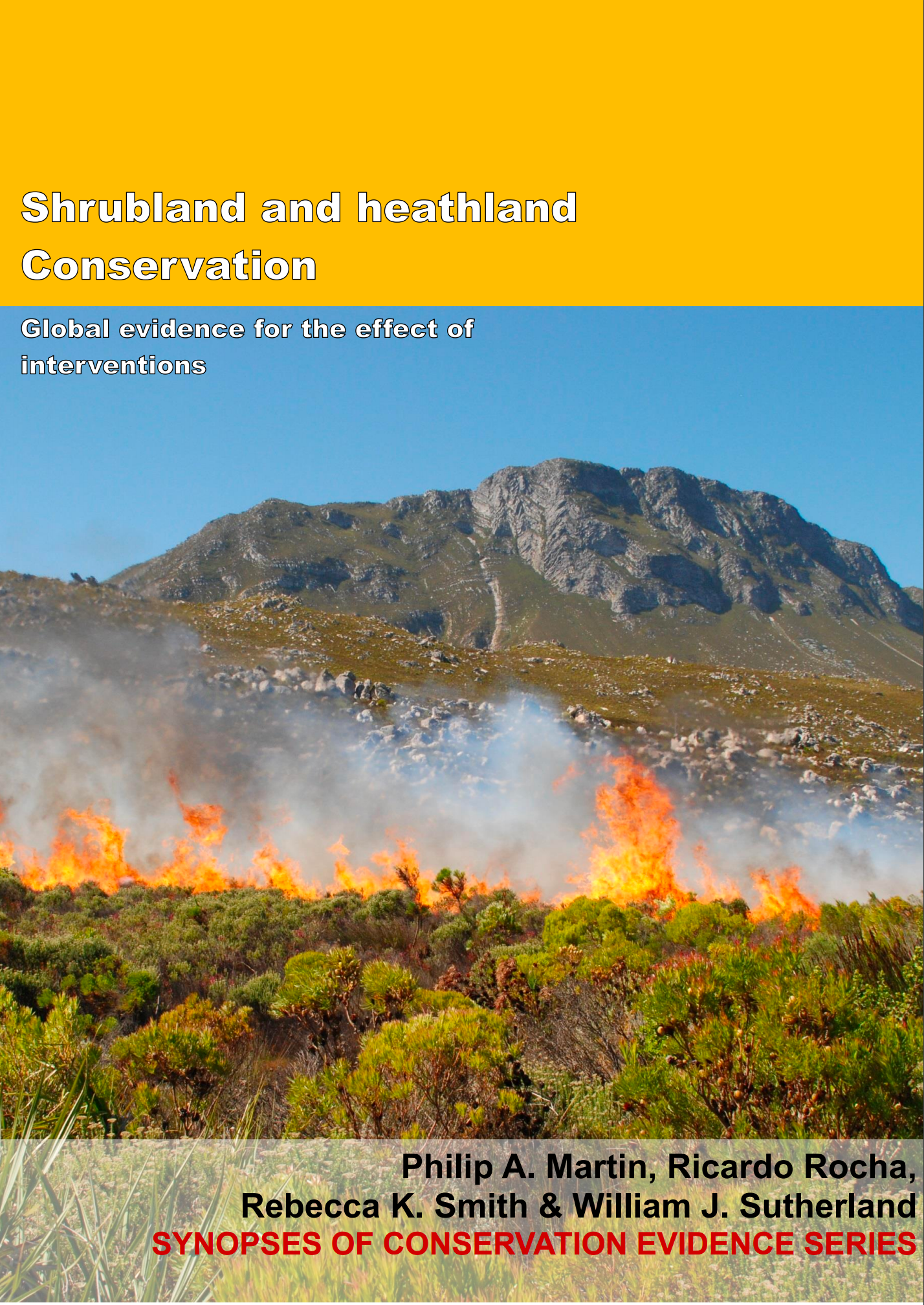Shorten the period during which livestock can graze
-
Overall effectiveness category Unknown effectiveness (limited evidence)
-
Number of studies: 2
View assessment score
Hide assessment score
How is the evidence assessed?
-
Effectiveness
32% -
Certainty
20% -
Harms
2%
Study locations
Supporting evidence from individual studies
A replicated, randomized, controlled study in 1989–1995 in wet heathland in Northumberland, UK (Hulme et al. 2002) found that after six years only allowing grazing in winter or summer there was little difference in heather Calluna vulgaris height compared to areas exposed to year-round grazing. Heather height did not significantly differ in plots where grazing was only allowed in winter (38 cm), plots where grazing was only allowed in summer (38 cm), and plots where grazing was allowed year round (38 cm). The same was true for grass height (winter only: 37 cm; summer only: 33 cm; year-round: 31 cm). Four blocks, each composed of three 0.3 plots were fenced in 1989. Within each block one plot was grazed only in winter, one only in summer, and one year round. All plots had a density of 0.7 sheep/ha. Vegetation height was measured twice a year between 1989 and 1995 at 40 random locations using a sward stick.
Study and other actions testedA replicated, controlled, before-and-after study in 1990-1996 in two moorland sites in Derbyshire, UK (Welch et al. 1998) found that restricting grazing to summer or winter had mixed effects on grass cover in and the cover of crowberry Empetrum nigrum, bilberry Vaccinium myrtillus, and heather Calluna vulgaris. In one site and after six years, grass cover was higher after restricting grazing (77%) than before grazing restriction (75%), while in another site it was lower (after: 62%, before: 81%). Over the same period, the cover of grass in plots with year-round grazing declined (from 77% to 52%). In one site, cover of crowberry was higher after restricting grazing (13%) than before grazing restriction (5%). In one site, cover of bilberry was lower after restricting grazing (50%) than before grazing restriction (68%), whereas cover of heather was higher after restricting grazing (28%) than before restriction (20%). Over the same period, the cover of bilberry in plots with year-round grazing also declined (from 73% to 56%). In each site, sheep were excluded by fencing from four areas of 25 m x 20 m during a six-month period over summer (April to October) or winter (October to April) and two nearby areas had year-round grazing. Vegetation height and cover was recorded annually in August.
Study and other actions tested
Where has this evidence come from?
List of journals searched by synopsis
All the journals searched for all synopses
This Action forms part of the Action Synopsis:
Shrubland and Heathland Conservation
Shrubland and Heathland Conservation - Published 2017
Shrubland and Heathland synopsis





)_2023.JPG)














